
Abo Blood Groups In Human Beings
Genetic Basis Of Inheritance of Class 12
Abo Blood Groups In Human Beings
K. Landsteiner (1900) has given the concept of ABO blood groups, on the basis of presence or absence of certain antigens. It was found that there are two antigens A or B and as a result of these, four groups of blood are present. With these antigens, there are two types of antibodies in the serum of the blood. Antibodies in a particular individual will be found of those antigens that are absent in blood.
Presence of antigen and antibodies in human blood:

Fig: Antigen and antibodies in human blood
Antibodies in blood group A will be able to agglutinate RBC of the blood group B and vice versa. AB blood group will not agglutinate any other group due to the absence of antibodies. O blood group should be able to agglutinate all other three blood groups except its own.
Compatible donor and recipient ABO blood groups:
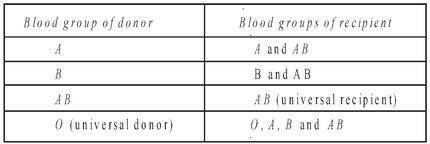
Fig: ABO blood groups donor and recipient
INHERITANCE OF ABO BLOOD GROUPS
A dominant gene I is responsible for the presence of antigens on RBCs and if gene i is present, then no antigens on RBCs is present and this results in the formation of O blood group. Here gene I is dominant over gene i. Gene IA produces antigen A and gene IB produces antigen B. The antigen consists of glucophorin having specific group at 2-position of terminal galactose-N-acetyl in case of A group and hydronyl in case of B group. Genes IA and IB are co-dominant. So a heterozygous has both antigens A and B and this results in the formation of AB blood groups.
IAIA × ii
Homozygous A blood group Homozygous O blood group
IA ↓ i
IAi
Heterozygous A blood groups
IBIB × ii
Homozygous B blood group Homozygous O blood group
IB ↓ i
IBi
Heterozygous B blood groups
IBi × IAi
Heterozygous B blood group Heterozygous A blood group
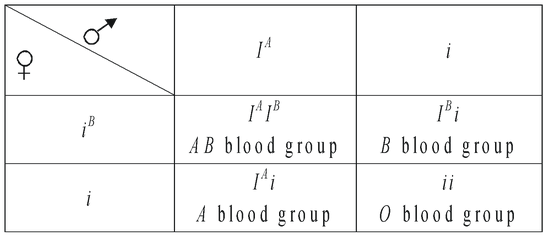
Result : All four types (A, B, AB and O) of blood groups are formed
IAIB × IAIB
AB blood group AB blood group
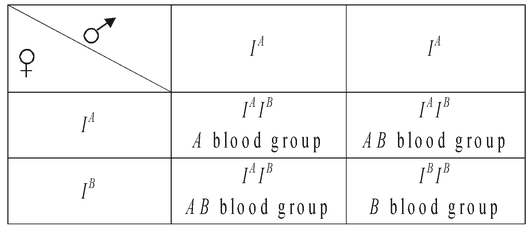
Result : Blood groups A, B and AB are formed.
Pattern of inheritance of blood groups:
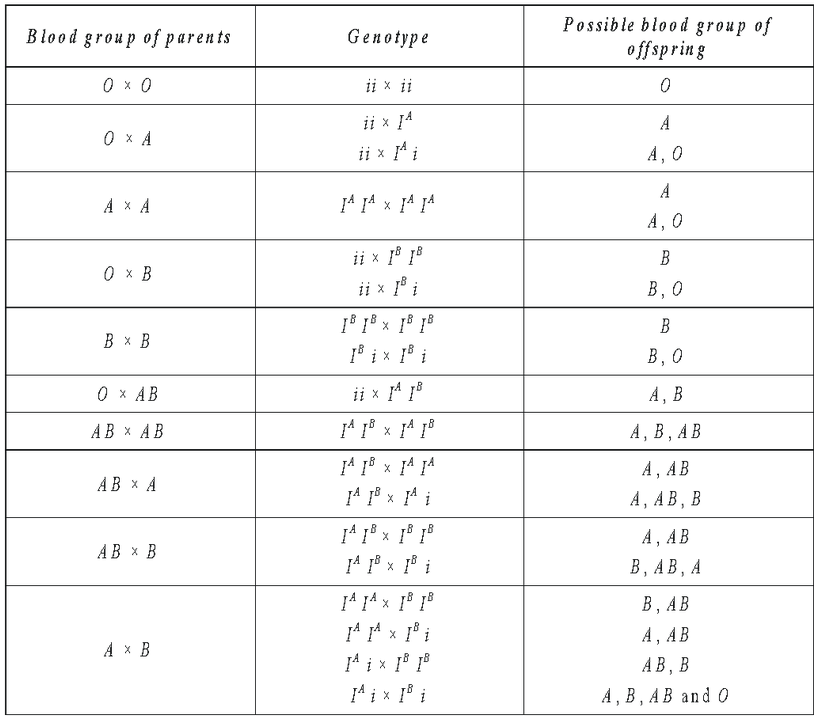
Result : Inheritance of blood groups
Rh FACTOR
Abo Blood Groups In Human Beings
K. Landsteiner and A.S.Wiener (1940) discovered the presence of another antigen on RBCs of man similar to that antigen present in Rhesus monkey and called it as Rh factor. The symbol “Rh” came from the first two letters of the species name of the monkey. In India 85% of population possess this factor, so they are called Rh positive (Rh+) and 15% population is without this factor and hence called Rh negative (Rh−)
- Inheritance of Rh factor : Dominant gene R is responsible for the production of this antigen whereas Rh– persons are homozygous for recessive gene (r).
RR × rr
Homozygous Rh+ father Homozygous Rh− mother
R R ↓ r r
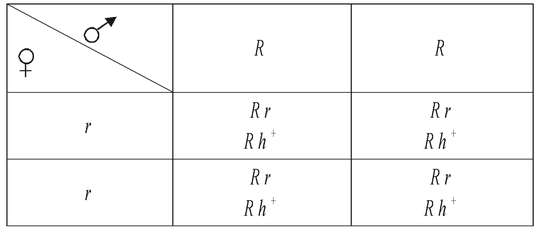
Result : All offspring are Rh positive (Rh+)
Rr × Rr
Homozygous Rh+ father Homozygous Rh+ mother
R r ↓ R r
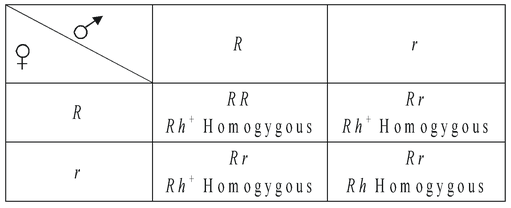
Result : 3 Rh+ children : 1 Rh− child
ERYTHROBLASTOSIS FOETALIS
Blood is frequently exchanged between the mother and the foetus during childbirth. Thus Rh– mothers are often immunized by blood from Rh+ foetuses to which they give birth. Usually no ill effects are associated with exposure of the mother to the Rh+ positive antigen during the first childbirth. Subsequent Rh+ positive children carried by the same mother, however, may be exposed to antibodies produced by the mother against the Rh antigen, which are carried across the placenta in blood serum. Such children may develop symptoms of haemolytic jaundice and anaemia, a condition referred to as erythroblastosis foetalis.
The symptoms may be mild or severe, even resulting in the death of the foetus or newborn infact if appropriate steps are not taken by the physician.
OTHER EXAMPLES
Coat pigment in rabbit is expressed by four alleles: C, cch, ch and c. Wild gray or agouti colour is due to dominant allele C, silver grey or chinchilla due cch cch, light grey due to cch ch or cchc, himalayan due to chch or chc and albino due to cc. In himalayan form the fur is white with dark brown/black extremities (feet, tail, nose, pinnae). These alleles show a gradation in dominance of C > cch > ch > c. That is, C is dominant to each of the three mutant alleles, while ch is recessive to cch, but dominant to c, and so on. The members of the multiple allelic series are conventionally represented by the same letter or symbol with appropriate superscripts to represent the different alleles.
Red-white eye colour series in Drosophila, (expressed by 15 alleles) spotting of skin colour in cattle, etc. Leaf form in cotton, seed coat colour in maize, self-sterility in plants, etc.
